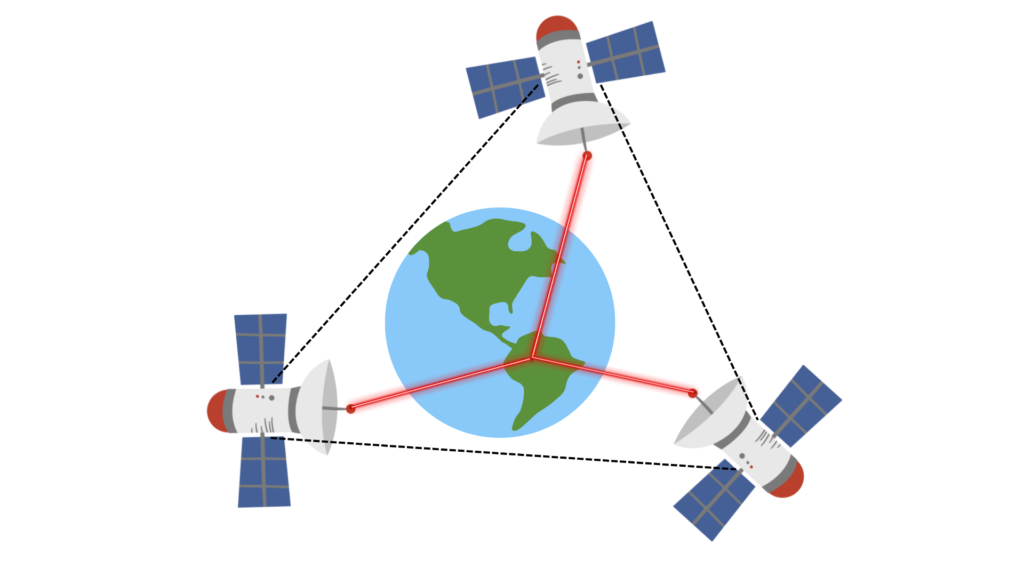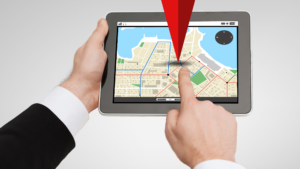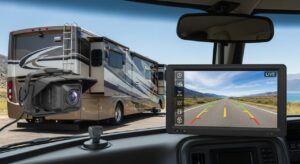How do GPS Tracking Devices Work ? – Quick Guide

How do GPS Tracking Devices Work ?
Introduction
A GPS tracking device is a device that uses Global Positioning System (GPS) technology to determine the precise location of an object or person. It can be used for various purposes, such as tracking vehicles, monitoring the movement of goods, locating lost or stolen possessions, or even tracking the location of individuals for security or safety reasons. These devices typically consist of a GPS receiver that receives signals from multiple satellites to calculate the exact latitude, longitude, and altitude of the device. The location data can then be transmitted either in real-time or stored for later retrieval and analysis.
GPS (Global Positioning System) tracking devices have revolutionized the way we navigate and track locations. These small, portable devices have become an integral part of our daily lives, from guiding us to our destinations to helping us keep track of our loved ones’ whereabouts. But have you ever wondered how these devices actually work?
How does GPS tracking work ?
At its core, a GPS tracking device receives signals from a network of satellites orbiting the Earth. These satellites transmit precise timing information and location data, enabling the device to determine its exact position. The GPS system is operated and maintained by the United States government and is freely accessible to anyone with a GPS receiver.
So, how does a GPS tracking device receive signals from these satellites and determine its location? Let’s break it down into four main steps:
- Triangulation and Trilateration: GPS tracking devices use a method called triangulation or trilateration to determine their position. Trilateration is the process of measuring distances from known locations, while triangulation is the process of using angles and distances to identify a specific point. By combining these two methods, GPS devices can accurately determine their position.

- Satellite Signal Reception: GPS tracking devices receive signals from at least three satellites to establish their precise location. Each satellite transmits a signal containing information about its position, velocity, and time. The GPS receiver in the tracking device listens to these signals and calculates the distance between the device and each satellite based on the time it takes for the signals to reach it.
- Calculating Distance: To calculate the distance between the device and a satellite, the GPS receiver uses the speed of light as a constant. It multiplies the time difference between the transmission and reception of the signal by the speed of light. By comparing the travel times from multiple satellites, the GPS receiver can determine the distances.
- Determining the Location: Once the device has received signals from satellites and calculated the distances, it uses triangulation to determine its precise location. It takes the intersection point of multiple spheres, with the satellites at their centers and the distance as their radii, to pinpoint the device’s position in three-dimensional space.
However, it is crucial to note that various factors can affect the accuracy of GPS tracking devices. These factors include atmospheric conditions, satellite geometry, signal interference, and the device’s internal computational capabilities. Additionally, objects like tall buildings and dense foliage can obstruct the signals, leading to decreased accuracy.
Furthermore, GPS tracking devices often rely on cellular networks to transmit location data to a central monitoring system or any other designated device. These devices typically include SIM cards that connect to the internet and send data via wireless networks. This allows users to remotely monitor and track the location of vehicles, assets, or even individuals in real-time.

In recent years, the proliferation of GPS tracking devices has expanded their applications beyond navigation and tracking. Businesses now use them to optimize fleet management, improve workforce productivity, and enhance security. GPS tracking devices have also become invaluable tools for outdoor enthusiasts, allowing them to mark waypoints, record tracks, and share their adventures with others.
Also Read- Where to Hide a GPS Tracker on Car
Benefits of GPS Tracking
- Improved Fleet Management: GPS tracking allows businesses with a fleet of vehicles to efficiently manage and optimize their operations. It enables real-time monitoring of vehicles’ locations, speeds, routes, and other important data, resulting in better scheduling and planning, reduced fuel costs, improved customer service, and increased productivity.
- Enhanced Security: GPS tracking provides a layer of security for vehicles, assets, and even people. In case of theft or unauthorized use, the location of the tracked device can be quickly identified, enabling swift action and increased chances of recovery. This makes GPS tracking particularly beneficial for businesses that rely on expensive assets or operate in high-risk areas.
- Safety and Emergency Assistance: For individuals, GPS tracking offers safety benefits, especially for people who engage in outdoor activities, travel alone, or have medical conditions. In emergencies, the accurate location information provided by GPS tracking can be shared with authorities or emergency contacts, ensuring prompt help and potentially saving lives.
- Efficient Resource Allocation: GPS tracking enables businesses to optimize resource allocation by monitoring the utilization of vehicles, equipment, or personnel. This helps in reducing idle time, managing workload, and ensuring that resources are utilized effectively, leading to cost savings and increased efficiency.
- Improved Dispatch and Delivery: GPS tracking simplifies dispatching and routing tasks by providing real-time visibility and accurate estimated arrival times. This benefits delivery services as it ensures timely deliveries, reduces mileage, minimizes fuel consumption, and enhances customer satisfaction.
- Lower Insurance Costs: Many insurance providers offer discounts to businesses or individuals who use GPS tracking in their vehicles. This is because GPS tracking devices may reduce the risk of theft or vehicle misuse, and they provide valuable data for insurance claims and investigations in case of accidents.
- Data-driven Decision Making: GPS tracking provides valuable data on vehicle performance, driver behavior, fuel usage, and other metrics. By analyzing this data, businesses can identify areas of improvement, make informed decisions, and implement strategies to manage costs, increase efficiency, and enhance overall operations.
- Better Customer Service: GPS tracking allows businesses to provide accurate and real-time information to customers regarding the location and status of their deliveries, service technicians, or transportation. This transparency enhances customer satisfaction and builds trust.
- Compliance and Reporting: For industries such as transportation, logistics, or construction, GPS tracking helps with compliance by maintaining records of routes, travel distances, speed, and other required data. It simplifies reporting procedures and ensures adherence to regulations, reducing the risk of penalties or legal issues.
- Environmental Benefits: GPS tracking can also contribute to environmental sustainability. By optimizing routes and reducing unnecessary mileage, businesses can minimize fuel consumption, lower emissions, and have a positive impact on the environment.
Conclusion
In conclusion, GPS tracking devices rely on signals from a network of satellites to determine their precise location using triangulation and trilateration. With the help of sophisticated GPS receivers, these devices can accurately calculate distances and pinpoint their position in three-dimensional space. As technology advances, GPS tracking devices continue to play an essential role in navigation, tracking, and various other industries.

With a degree in Electrical Engineering and years of hands-on experience in the tech industry, passionate to provide readers with insightful reviews. From smartphones and laptops to smart home devices and emerging technologies, he navigates the ever-evolving tech landscape, offering in-depth analyses and honest opinions.

![3d_printed_art_01[1]](https://techreviewly.com/wp-content/uploads/2025/08/3d_printed_art_011-300x225.jpeg)
![a_women_wearing_a_smart_watch_01[1]](https://techreviewly.com/wp-content/uploads/2025/08/a_women_wearing_a_smart_watch_011-300x169.jpeg)






